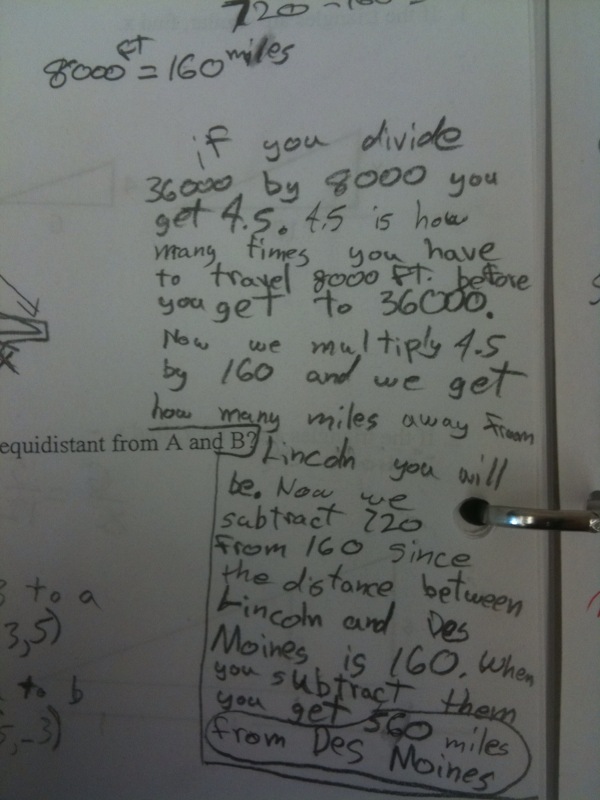
One student was able to come up with the equation: 1.50 a + 2.00 d = 360, but another was quick to point out that there would be many different solutions, so we couldn't use it...yet. So the first guess is 20 and we recognize that the total is too high. Usually that indicates that the first guess is too high, so we normally go with a lower second guess. However, this time, Aaron pointed out that it didn't make sense to decrease the guess on advanced tickets because they are cheaper. In fact we want to increase that one. This is right about the time I almost lost my poker face:
Aaron: "So if we add to the advanced tickets our total will actually go down."
"Why?"
"Because for every $1.50 we add, we lose $2.00. So every time we change the tickets by one, we drop $.50. Since we need to drop $30, we need to sell 60 more tickets in advance."
At this point, I almost blew it. Nearly jumped right in and said something stupid like, "That's right Aaron. You guys get it?" To which they would have all nodded "uh-huh" and we would have moved on. But I caught myself, gave him the "eh, I am not sure about that" and removed myself from the conversation. So Aaron had to try to re-explain to his classmates what he was saying. I could tell that a couple of them got it, but many were still perplexed. After a couple of minutes I asked Jose if he could explain what Aaron was saying. Jose nailed it and a bunch of kids have an "a-ha" moment. Good stuff.
Later I asked Jose why he didn't speak up a little sooner. He said that he didn't figure that he needed to ask any questions because he understood it. I asked for a show of hands on how many understood after Jose's explanation and that's when about 15 hands shoot up.
We have been talking a lot in my classes about how important it is to join the conversation. Some kids still think that it's just about them. They don't realize that if they offer something to the conversation, not only do they benefit from explaining something they already understand, but there is no telling how many other kids benefit too.
Today, I think Jose gets it.










